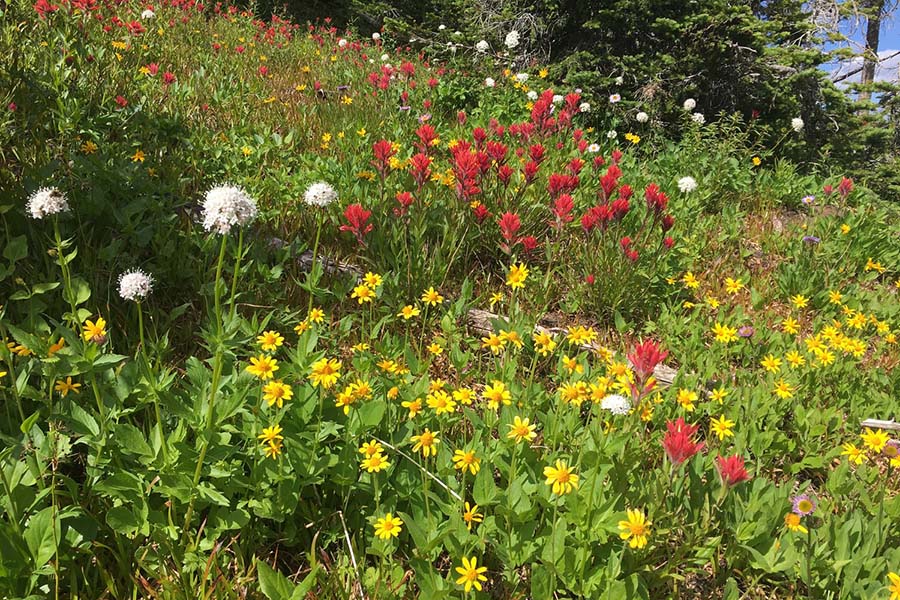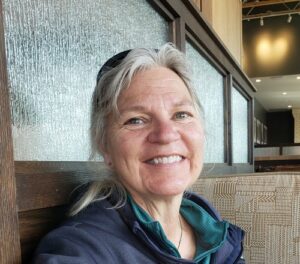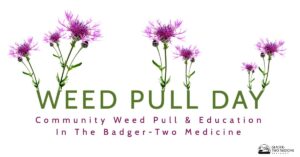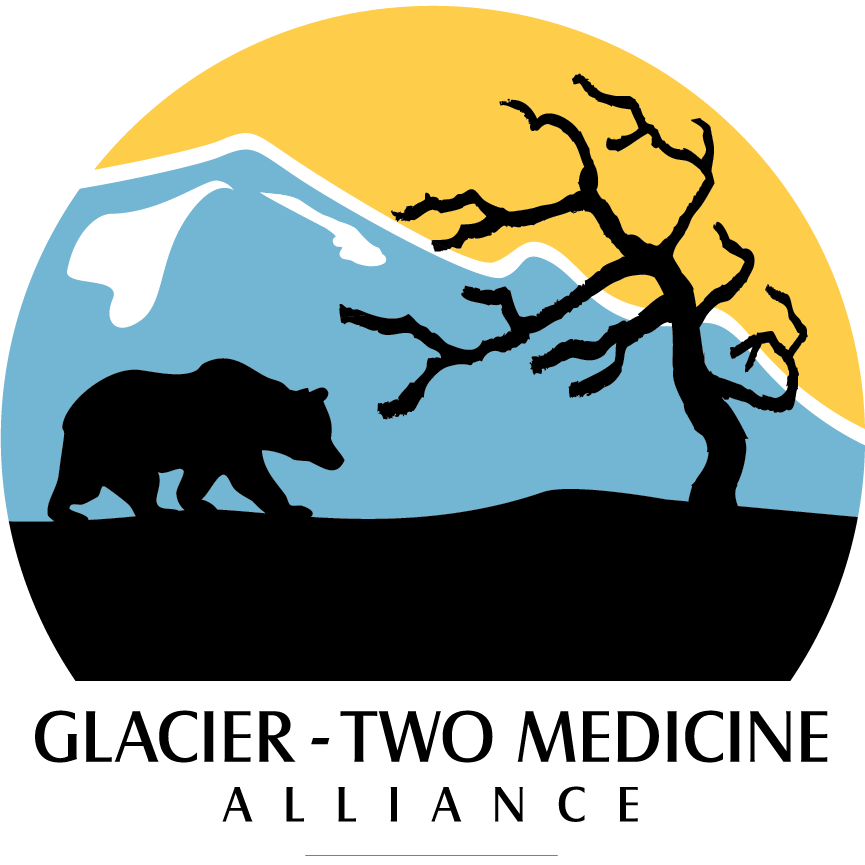
Native plant communities are the foundation of healthy, functioning ecosystems. They stabilize soils, improve water quality and provide food and shelter for wildlife. Unfortunately, many native plants are struggling due to increased heat and drought stress from climate change. To make matters worse, the shifting environmental conditions favor invasive plant species that can out compete many native plant species, creating cascade of ecological effects. Dawn LeFleur, vegetation program manager for Glacier National Park, will discuss the effects climate change and invasive species are having on Glacier’s native plant community along with what steps the Park is taking to foster greater ecological resilience, during the next installment of this year’s Two Medicine Voices Speaker Series. Dawn’s presentation is Wednesday, July 12th at 7 p.m. at Glacier Park Lodge in East Glacier Park. The talk is free and open to the public.
Glacier-Two Medicine Alliance’s Jordyn Steele recently sat down with Dawn to learn more about her background and her work to defend native plant communities in Glacier National Park from the twin threats of climate change and invasive species. The conversation has been lightly edited for clarity and length.
 JS: Would you please tell us a little bit about yourself, including where you were raised and went to school?
JS: Would you please tell us a little bit about yourself, including where you were raised and went to school?
DL: I grew up in southern Wisconsin on a vegetable farm there. I went to Beloit College, a small liberal arts college to study biology & psychology. After college I was in the Peace Corps in a forest program. My project included developing a tree nursery in West Africa in the country of Burkina Faso. After two and a half years, I came back and went to grad school. I got my MS in Restoration Ecology. I focused in agroforestry which was a continuation of my work that I continued to do in Burkina Faso, incorporating planting in sustainable agriculture systems.
When I finished my masters, I had a friend who worked in Glacier National Park. I didn’t know what to do with my summer so my friend asked me why I don’t come out to Glacier? I was hired as the Revegetation Crew Leader for GNP 31 years ago.
(Fun fact- that’s the same year Jordyn was born!)
JS: How did you decide to study noxious weeds professionally?
DL: My title is the vegetation program manager/biologist. I am also the IPM (integrated pest management) biologist and the restoration biologist – depending on who I am talking to. The story of how I got into noxious weeds is a story that came full circle. You can’t have revegetation without thinking of invasive species so I’ve been working with both for my whole career.
So, the story in a nutshell was, I was a seasonal employee for the park for five years as the Revegetation Crew Lead. Then they created a term position for the Revegetation program and noxious weeds are an important component of successful revegetation. I did the term position for a while until the park the park opened a permanent job for noxious weeds. I wasn’t going to apply but my friends convinced me that I would be silly not to apply so I applied. but there were so many applicants, the job got sent to Yellowstone. In the end, I got the position.
A couple of years later, my supervisor retired and I moved into his position. I offered that I could combine the two positions – revegetation & invasive species management – if I could hire more permanent staff members to work under me. Now there is one permanent lead for revegetation, one doing IPM, and one at the native plant nursery.
From an ecological standpoint, pest management is about habitat, human interaction, and why the ecology is encouraging pests in certain areas. My job now is fully encompasses working with all of those areas.

JS: This year's speaker series explores how climate change is affecting the environment and people here in the Crown of the Continent ecosystem along with various efforts to enhance ecological or social resilience. How does climate change appear to be affecting noxious weeds in the Crown?
Spotted knapweed, a widespread noxious weed that is threatening native plant communities and important rangelands. Please pull a few every trip out - wear gloves!
DL: Oh boy – noxious weeds are opportunists. They’re not native here so they are used to adapting to survive. They are really good at adaptation. If we have a hot, dry spring – the weeds will take advantage of that. Unfortunately, if we have a wet spring, the weeds will take advantage of that.
The weeds that will take over have the best characteristics, they have adapted already. With
climate change, we’ve seen extreme drought conditions stressing out the native plant communities. The weeds will flower and go to seed twice or three times in a summer, because they can and the weather is now allowing them to. Those extremes exacerbate weeds. Now that it is hotter and drier at high elevations, the temperatures allow them to grow higher in elevation too. With snow melting and drying out earlier, the noxious weeds are able to succeed up there where snow patches used to last all summer long.
With climate change, we see changing vegetation communities. Phenology is getting messed up because of how early things are drying out. The soils dry out, and stresses the native plant communities. Then the weeds takeover the dry soil areas where native plants are struggling.
Extreme weather events and extreme wind events causes a lot of disturbance. Not only with snow blowing off exposing bare, dry ground but also with trees being uprooted in wind events. This causes a lot of disturbance. There is less shade with less trees that will dry out the ground faster. There is also now more disturbed soil that the noxious weeds can take hold of and get established in. Wind events take down trees, losing canopy – and disturbing soil opens it up for weeds.
Then you have wildland fire and the vicious circle with cheat grass. Fire brings in cheat grass then the next time fire comes through that area, it will move faster through the cheat grass. Cheat grass is a great one to help with because it responds good to hand pulling.
JS: What are the implications of these effects on the revegetation of native plants species here in the Crown?
DL: There are two major purpose of revegetation: one so native plants outcompete weeds and two, for soil erosion control. Revegetation is not a cheap endeavor, we grow (the plants) here and it is very labor intensive.
We get these native plants into containers and seed with fast growing native grasses; the idea is to establish native plants before the non native plants become established. Invasive plants love disturbance. If we don’t do native revegetation, the weeds will take advantage of disturbed soil and take over with no chance for the native plants to reestablish themselves.
It’s how my job has come full circle. We can’t talk about revegetation without talking about the threat of noxious weeds and we can’t talk about noxious weeds without the hope of securing native plant communities.
 JS: In light of known and predicted climate impacts, what can we as citizens and managers be doing to help foster a more resilient native plant habitat?
JS: In light of known and predicted climate impacts, what can we as citizens and managers be doing to help foster a more resilient native plant habitat?
Join us, July 29th to fight weeds in the Badger-Two Medicine and learn more about stopping these invasives. Free lunch and door prizes.
First off, try to minimize disturbance, whether on your own land or on public lands. Try to keep native plant communities intact. Even if we’re going to widen a trail, or put in a sign at a trailhead, we (Glacier National Park staff) minimize disturbance so native plant communities are able to survive and thrive.
Second, becoming aware of what is an invasive plant vs. native plant is extremely helpful! What species are a threat to native plant communities? Which to leave in the ground or which to pull? Learning about non-native plants, learn to identify them, be a part of the solution by knowing what to do when you see one. Can I pull it and leave it on site, or when I pull, should I bag it? It depends on the species of non-native plants and sometimes depends on the time of year.
Learn who the land managers are, who should you contact if you see a huge invasion. Download the Montana Natural Heritage Program’s app to report invasive plant sightings and to GPS point colony’s easily! (JS: info on how to do so is available at the event) Participating in weed events like the Weed Rodeo, the Weed Blitz, and Weed Pulls. Get the word out there! Pass it on!
JS: Is there anything you wanted to add about this topic that hasn’t been covered?
DL: Invasive species are one of our biggest threats, we are seeing as the result of climate change. Invasive species are taking advantage of the extreme weather patterns coming through the area.
I participated in a climate change panel and we had scientists from all over with graphs talking about all sorts of effects of climate change we are seeing. Then I stood up, without graphs and talked to people about the effects of climate change on native plant communities and the threat of invasive species and it was easy for people to understand and see the results.
It’s not an uplifting topic to talk about but it is the easiest way to see the effects of climate change in your backyard and it’s an easy way to help be a part of the solution.
The series continue monthly through August. Next month, Danielle Antelope, executive director of FAST Blackfeet, will discuss the impacts of climate change on traditional Blackfeet foods and efforts to build a more resilient local food system for Blackfeet Nation. Danielle’s talk is Wednesday, August 23rd, at 7 p.m. at the Glacier Park Lodge in East Glacier.
